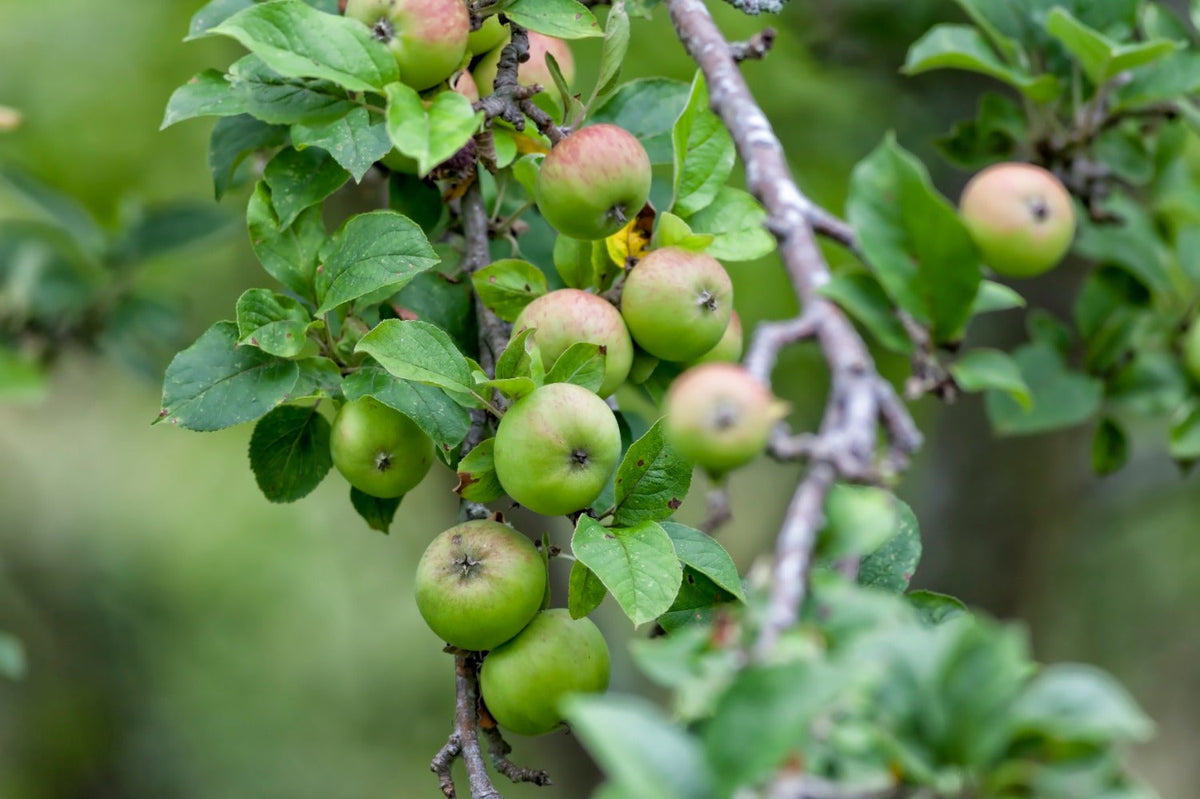
From apple tree to a basket full of apples in September
|
Tijd nodig om dit artikel te lezen: 3 min
|
Tijd nodig om dit artikel te lezen: 3 min
September is harvest month. Especially when it comes to fruit, there is plenty to pick in the garden this month. And you really don't need an entire orchard for that. With a first apple tree you can get somewhere, and you can of course add other types of fruit trees or bushes later. How do you get from that apple tree to a full harvest basket of apples ?
Apple trees come in many varieties, which is great, but doesn't always make the choice easy. Here are some tips to help you select the right apple tree.
During this period, visit a grower, because you can often see and taste the apples there.
Think about the flavor of your apples (sweet or sour) and the texture (crunchy, juicy or soft).
Also consider for what purpose you want to harvest apples. Are you looking for a good storage apple to eat for a long time? Or do you mainly want to make apple sauce or compote for the winter? Or do you not want to harvest at all and let the birds enjoy it?
There are also some considerations around the apple tree itself. In short, there are three types of apple trees: low, medium or high trunk.
Where in the garden will you plant the tree? And how much space do you have? The low-stemmed apple trees can be planted closer together, the high-stemmed ones often have a wider crown and require more space.
How do you want to harvest ? Are you prepared to use a ladder to prune a tall apple tree and harvest it later? Or do you prefer to keep your feet on the ground and choose a medium-high type? Keep in mind that with short-stemmed specimens you sometimes have to make a bit more effort to crawl under the tree.
How soon do you want to harvest? High-stemmed apple trees can yield up to 100 kilograms, but you have to wait a few years for that. With a medium-high trunk, you will have apples to harvest after three years.
You can even keep some small apple trees in a pot , for example on the terrace or balcony.
And don't forget: if you plant the apple tree as a solitary, you should choose a self-pollinator. Cross-pollinating species need other apple trees that are nearby and bloom around the same time.
Some apples ripen earlier than others. And the color doesn’t always tell you when an apple is ripe. The best way to know when to pick them is to feel if the stem is already loose when you gently twist the apple.
Don't go crazy pulling on all the apples in the tree. Make a slight upward twisting movement and feel if the apple comes loose. If not, it is too early and let it hang a bit longer.
If you have damaged an apple while picking, it is best not to leave it for too long before eating or processing it, because mold can form more quickly.
Can you also use apples that have fallen to the ground by themselves? In principle yes, if you cut away any rotten spots. You can no longer store these apples, but they are still suitable for processing in, for example, a pie or as apple sauce.
Take a harvest basket or bucket with you when you go apple picking. For tall trees, and even some with a medium-high trunk, you will also need a ladder or step stool. Be careful not to throw the apples down from the tree, because a damaged apple cannot be stored for long.
Apples picked, now what? Do you store them in the fridge or not? How long do they last?
Store apples in a dark, cool place . By cool we mean about 4 degrees. Don't choose a place where it can freeze and make sure animals can't get to your harvest.
The largest specimens keep the shortest. So eat those apples as soon as possible.
You can also store apples in a processed form , for example as a compote in sterile jars or as applesauce in the freezer.
Check your storage apples regularly. Remove any that have started to mold or rot.
Tip: Do not put apples with different storage times together, as one variety can ripen the other faster.



